Introduction
Nokia's return to the smartphone market with Android hasn't exactly set the sales charts on fire, but the company has steadily been making progress, with a constant stream of new and relevant devices. The latest one we have today is the Nokia 6.1 Plus, an entrant in the ever-popular mid-range segment.
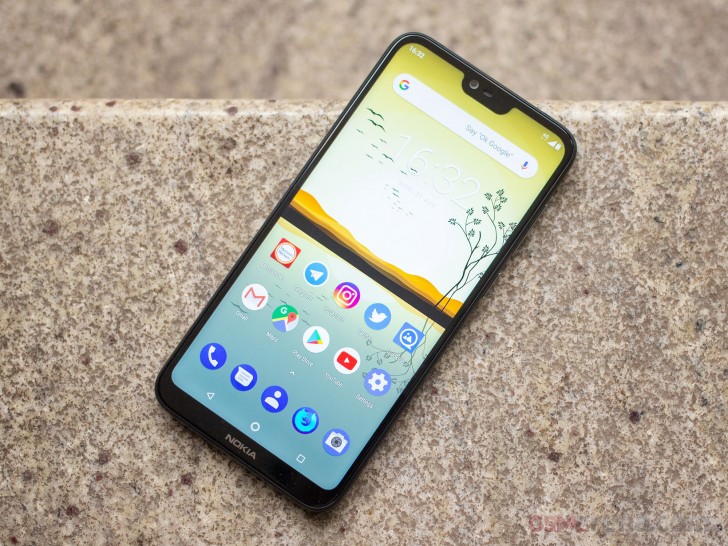
Even though it shares most of its name with the Nokia 6.1, don't let that fool you into thinking the 6.1 Plus is some sort of larger version of that. This is very much a different phone altogether, one that feels much more modern than the 6.1 even though it's only a few months newer.
Yes, we are talking about the notch design. Love it or hate it, the notch seems to be the trend for 2018 and Nokia is fully onboard. However, unlike others, Nokia has chosen to do this with its mid-range offering, which makes it one of the few in this segment to sport this design.
Nokia 6.1 Plus specs
- Body: Aluminum frame, Corning Gorilla Glass 3 front and back
- Display: 5.8-inch, 2280x1080, 19:9 IPS LCD with notch
- Rear Camera: 16MP f2.0 + 5MP f2.4 depth sensor, two tone LED flash, 4K30 video, EIS (1080p only)
- Front Camera: 16MP f2.0 fixed focus, 1080p video
- OS: Android 8.1 Oreo (Android One)
- Chipset: Qualcomm Snapdragon 636, 1.8GHz 8x Kryo CPU, Adreno 509 GPU
- Memory: 4GB LPDDR4X, 64GB eMMC 5.1, microSD support (up to 400GB)
- Battery: 3060mAh, Quick Charge support
- Connectivity: Dual SIM (hybrid), LTE Cat. 4, Wi-Fi 802.11ac, Bluetooth 5.0, GPS/GLONASS, USB 2.0 Type-C, headphone jack
- Misc: FM radio, fingerprint sensor
Looking at the specs, one can tell the Nokia 6.1 Plus is a decidedly mid-range offering, however, one with reasonably good specs that should make some sit up and take notice. The Snapdragon 636 chipset, for example, is reasonably powerful and 4GB LPDDR4X memory sounds generous. Then there's the glass and aluminum design and a dual rear camera system. Nokia is also sticking with Android One for this device, which means you can expect a stock Android experience with relatively quick updates.
On paper, there is a lot to like here. Let's see what's it like in practice.
Unboxing the Nokia 6.1 Plus
The Nokia 6.1 Plus comes with relatively simple packaging, with just the phone, 10W charger and a USB-C data cable being bundled.
A simple silicone case would have been nice, but you'll have to get that separately, along with a pair of earphones. The charger also does not support fast charging, even though the phone does.
Disclaimer: You might notice that this review is shorter than usual and doesn't include some of our proprietary tests. The reason is it has been prepared and written far away from our office and test lab. Still, we think we've captured the essence of the phone in the same precise, informative and detailed way that's become our trademark. Enjoy the good read!
Design
The Nokia 6.1 Plus has a remarkably compact design for a smartphone in 2018. Now, it isn't a small phone by any means, and if that's what you want then an iPhone SE is still your best bet, but it's reasonably compact and fits much better in hand than most phones out there today.
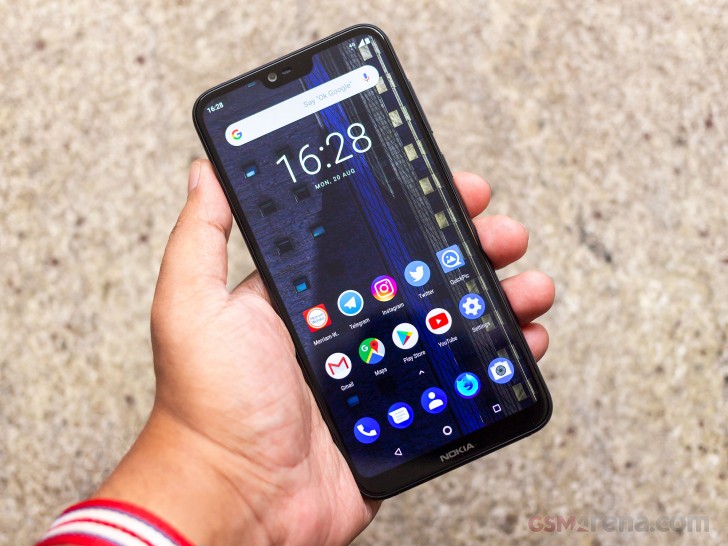
One of the good things about the design, however, is just how much of it is dedicated to the display. Thanks to the notch, the display goes all the way to the top edge, and the notch itself is relatively small.
Near the bottom, there is a thin chin but nothing too distracting. We wish Nokia hadn't put their logo on it here as that attracts more attention to the chin but otherwise the bezels are quite minimal here.
Overall, there is an overwhelming feeling of holding just the display in your hand, which brings some glamor to the humble mid-range category.
Around the sides, the phone uses an aluminum frame with a silky-smooth texture. Of particular note are the perfectly flush SIM tray and the aluminum buttons with polished chamfered edges. The buttons are just a tad too flush with the body but still quite usable. Being all on one side, they are easy to use together for taking screenshots, and you don't accidentally press anything on the other side.
Along the top are a headphone jack and a microphone. On the bottom are a USB-C connector and a single loudspeaker.
Like the front, the back of the phone is also made out of Corning Gorilla Glass 3. The camera system, with the dual lenses and dual LED flash, is ever so slightly raised and below that is the fingerprint sensor. Below that there is yet another Nokia logo and then the Android One branding at the bottom.
There are two problems here. The glass back is slippery, so when you keep the phone on a hard surface, there is a slight tendency for the phone to slide around. Second, the fingerprint sensor position is way too low for a phone of this size. With average sized hands, your finger naturally rests where the flash is, and you have to do a little shift every time to reach the sensor that sits lower. You get used to it over time, but it's never where your finger naturally goes, so it's always a bit awkward.
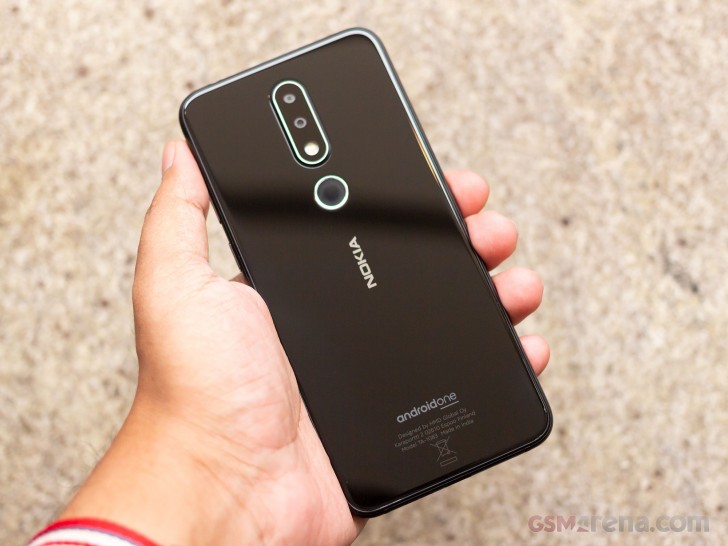
Apart from that, the phone is quite lightweight. While this is a plus, it also feels a bit insubstantial in hand, as if it's a dummy unit. The phone feels oddly hollow, and there is a strange feeling of holding a toy. Conventional wisdom would suggest a glass and metal phone would look and feel great, and while it does look great, it doesn't feel great at all.
Display
The Nokia 6.1 Plus has a 5.8-inch, 19:9 FullHD+ IPS display with a resolution of 2280x1080 pixels. The display scores some brownie points with its pixel density, which is quite high, as well as the good viewing angles, typical of an IPS LCD. The notched design also gives a feeling of edge-to-edge design, which is appealing.
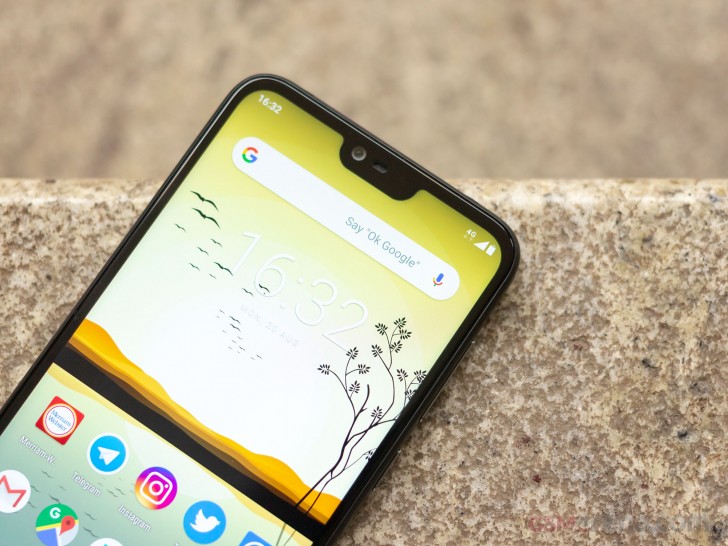
Where it falls behind is in color calibration. The display has an exceedingly cool white point, which makes the screen look incredibly blue at all times. On top of that, it comes with greatly exaggerated color saturation. It's not a bad display by any means, and some might find the look appealing but it's a bit garish by today's standards, and we wish Nokia had provided some standard color profiles for those who would like a more natural looking display.
Another issue with the display is that it doesn't get very bright, which is a problem outdoors as you are forced to run it at full brightness and even then, it's not particularly easy to see under sunlight.
Battery Life
The Nokia 6.1 Plus has a 3060mAh battery, which seems pretty small by today's standards but the phone also doesn't have an especially large display nor a particularly powerful chipset to power, so things don't get as bad as you might think. With moderate use, it is possible to get through a day on a single charge, with only the heaviest of use cases resulting in you reaching for the charger before the day is over.
Fortunately, the phone also features Quick Charge, which helps in charging the phone from flat to a full charge in about two hours. Unfortunately, the phone does not ship with a Quick Charge compatible charger, and you would have to buy your own.
In the battery settings, Nokia has implemented a background activity manager feature, which is off by default but can be enabled to more strictly restrict the background activity of apps. This can be done individually or for all apps at once. The downside is that it may result in some apps not getting any notifications.
Nokia did leave out a battery percentage option for the status bar, so the only way to see the remaining charge is by pulling down the notification shade. We suspect Nokia was worried it would take too much of the status bar space with the notch, but we felt there was enough space left there even with all icons for a percentage counter.
Loudspeaker
The Nokia 6.1 Plus has a single down-firing loudspeaker, which Nokia says uses a "Smart Amp." The audio quality is mediocre; the speaker gets reasonably loud but sounds a bit tinny with very little bass. It's good enough, though, for watching the occasional YouTube video, however, you will have to get used to the sound coming out from one side.
Software
The Nokia 6.1 Plus comes with Google's Android One experience out of the box. For now, it's only running Android 8.1 Oreo, but we suppose Android Pie should be coming at some point in the future.
Android One is about bringing Google's version of Android to devices from other OEMs. It's not quite the same as having stock Android, as OEMs are allowed some customizations, but the general look and feel is very reminiscent of Google's own Pixel and Nexus series of devices.
The Nokia 6.1 Plus mostly delivers on this promise, but with a few Nokia customizations along the way. The launcher seems to be a different version or at least a different version than the one on the Mi A2 and lacks the option not to add new app icons to the home screen. Every time we installed an app, we had to manually remove the icon from the homescreen every time. The launcher is similar to the Pixel Oreo launcher, wherein the app drawer and notification shade color depend upon your wallpaper, and you can't just force it to be light or dark, a feature that was added in the Android Pie launcher.
The phone comes with largely the standard set of Google apps with a handful of apps. There are a few third-party apps installed, but they can be uninstalled.
The list of Nokia apps includes a custom Camera app, an FM radio app, and a Support app that contains info regarding nearby service centers, support chat, user guide, FAQs and warranty information.
Inside the Settings app, things look pretty much stock, except for the addition of a Gestures menu, which includes options such as rejecting calls by turning over the phone, mute on pickup, swipe fingerprint sensor for notifications, double tap power button to open the camera and lift to wake the phone. Also, in the battery menu, is the aforementioned background activity manager that lets you prevent all or individual apps from running in the background.
The UI experience here is overwhelmingly stock, which is good and what you expect from an Android One device. However, sometimes it feels not everything is well thought out for this particular device type.
For example, the phone has settings to show or hide the notch by turning the status bar black. However, the phone lacks the same level of notch customization we see on other phones. On OxygenOS, for example, you can individually allow apps to have access to the notch area in fullscreen mode, but that's not possible on the Nokia 6.1 Plus. None of the apps can access the notch area in fullscreen mode, including apps such as the photo gallery. However, they can work in non-fullscreen mode. This causes a jarring transition every time an image goes in and out of fullscreen mode.
The notch also isn't fully considered while designing the UI. You can see the volume bar slider buttons partially go underneath the notch area. Nokia also didn't bother adding rounded corners for the top edges of the screen when the notch isn't being used, and it just looks cut off. The problem here is that stock Android Oreo wasn't designed with notches in mind, and Nokia either didn't or just couldn't do much to fix that.
It's also weird how the phone deals with making apps fullscreen to fill its entire 19:9 aspect ratio display. Again, stock Android Oreo has no option for this built-in. Other manufacturers provide an option in the Settings app to control this on a per-app basis. On the Nokia 6.1 Plus, you have to open the app, but if it's not designed to fill the entire screen, you won't see any option immediately to fix that as on other devices. You have to first go into multitasking or the Overview mode and then wait for a button to appear on that particular app window. When you tap that button, the app then reopens and fills the entire screen.
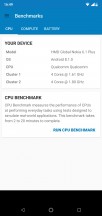
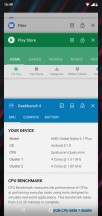
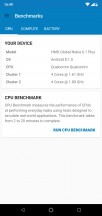
Apps can be made fullscreen using the button on app windows
None of these are deal breakers, but it does make the Nokia 6.1 Plus feel like a phone stuck between two worlds, where the software hasn't quite caught up with the hardware. Hopefully, these niggles will be fixed when the phone gets updated to Android Pie.
Apart from that, you are free to enjoy the Android One experience as is. For some, that's a boon as they prefer the operating system to get out of the way and just enjoy their apps and the hardware. But if you're coming from one of the other Android ecosystems, then you will find the experience here somewhat barebones and lacking.
Performance
The Nokia 6.1 Plus runs on the Qualcomm Snapdragon 636 platform, a reasonably powerful chipset that is popular in this price category. The 636 includes a quad-core CPU, with a combination of dual Kryo 260 Gold cores based on Cortex-A73 and dual Kryo 260 Silver cores, based on Cortex-A53. There's also the Adreno 509 GPU, good for FHD+ resolutions.
The phone also comes with 4GB of LPDDR4X memory and 64GB of eMMC 5.1 storage, which can be expanded up to 400GB with microSD.
In benchmarks, the phone performed on par with previous Snapdragon 636 devices, which is to say, it performed reasonably well.
However, benchmarks only tell part of the story. In the real world, the performance is respectable for a phone in this price range, but it does seem like Nokia could have done better.
The 636 is powerful enough to run everyday applications with ease. The phone can launch them quickly enough and the 4GB RAM is also sufficient for multitasking. The performance, in general, is satisfactory. However, there is the occasional hitching while scrolling in some apps. It's nothing uncharacteristic of devices in this class, however, and the overall performance in apps is exactly what we'd expect it to be.
In games, the performance again was as expected. Expectedly underwhelming, that is. This is not the class of devices you buy if absolute image quality and frame rates are what you're after. You can, of course, install and run something like PUBG or Asphalt 9 but only at the lowest setting. But if image quality isn't your concern and you just want a playable experience, then that's perfectly possible on the Nokia 6.1 Plus.
GeekBench 4.1 (multi-core)
Higher is better
- Oppo F7
5901 - Nokia 7 plus
5893 - Oppo Realme 1
5741 - Nokia 6.1 Plus
4929 - ASUS ZenFone Max Pro
4910 - Xiaomi Redmi Note 5 Pro
4696 - Xiaomi Mi A2
4625 - Xiaomi Mi A2 Lite
4388 - Xiaomi Redmi S2 (Y2)
4313 - Nokia 6 (2018)
4225 - Huawei P20 Lite
3756 - Motorola Moto G6 Play
2328
GeekBench 4.1 (single-core)
Higher is better
1634
1617
1531
1511
1340
1331
1327
938
882
881
848
639
AnTuTu 7
Higher is better
- Nokia 7 plus
140820 - Oppo F7
139414 - Oppo Realme 1
138524 - Xiaomi Mi A2
130927 - Nokia 6.1 Plus
115571 - ASUS ZenFone Max Pro
115509 - Xiaomi Redmi Note 5 Pro
107737 - Nokia 6 (2018)
90918 - Huawei P20 Lite
87431 - Xiaomi Mi A2 Lite
77964 - Xiaomi Redmi S2 (Y2)
77488 - Motorola Moto G6 Play
58757
GFX 3.0 Manhattan (1080p offscreen)
Higher is better
- Nokia 7 plus
23 - Xiaomi Mi A2
22 - Oppo F7
20 - Oppo Realme 1
20 - Nokia 6.1 Plus
16 - ASUS ZenFone Max Pro
16 - Nokia 6 (2018)
14 - Xiaomi Mi A2 Lite
9.9 - Xiaomi Redmi S2 (Y2)
9.7 - Huawei P20 Lite
8.7 - Motorola Moto G6 Play
7.1
GFX 3.0 Manhattan (onscreen)
Higher is better
- Xiaomi Mi A2
21 - Nokia 7 plus
21 - Oppo Realme 1
20 - Oppo F7
18 - Xiaomi Redmi S2 (Y2)
18 - Nokia 6 (2018)
15 - Nokia 6.1 Plus
15 - ASUS ZenFone Max Pro
15 - Motorola Moto G6 Play
13 - Xiaomi Mi A2 Lite
9.4 - Huawei P20 Lite
8.1
Camera
The Nokia 6.1 Plus has a dual rear camera system comprising of a 16MP f2.0 primary sensor and a 5MP f2.4 depth sensor. On the front is a 16MP f2.0 fixed focus camera.
Camera quality in the past has been a strong suit of Nokia devices, although things have changed a lot since then. Still, the camera is one of the main features of the Nokia 6.1 Plus, so we were curious to see what it offered.
First, let's take a look at the camera app. Nokia has included a somewhat basic camera app here that is light on the essentials but includes some of the gimmicky features. For example, the pro or manual mode is very barebones here, letting you adjust the metering, autofocus distance (auto, infinity, and macro), white balance presets and exposure compensation. There is no shutter speed control, no ISO and no fine-grained control over the manual focusing and white balance. The mode is just here for the sake of it and brings little to the table.
On the other hand, the app includes Nokia's absurd-sounding Bothie feature, which combines shots from the front and rear cameras into a low-resolution image or video, and whose usefulness is largely suspect. There are also some Snapchat/Animoji style AI filters here that aren't very good and a beautification mode that can be enabled and adjusted with a slider. You can also switch to panorama or the portrait mode, but there is no countdown timer option.
In videos, you can choose to live stream directly to YouTube or Facebook from within the app. There's also a 4K time-lapse function and a slow-motion mode that records in 480p at 120fps. But enough about the camera app, let's talk about image quality.
Looking at the daylight image samples, two things come to notice, the excellent color reproduction and the accurate white balance. These go a long way in ensuring the images coming out of the camera look natural and close to the original scene. Further inspection also reveals a good level of detail without too much smudging from the noise reduction algorithm and excess sharpening to combat it. The general level of image processing seen here is at a mature level, which makes the images coming out of the Nokia 6.1 Plus some of the best we have seen in this price range.
However, the images aren't faultless. There is a fair bit of noise that can be seen in the shadows even in daylight images, although admittedly most of our daylight images were shot in overcast conditions. The overcast conditions also brought forth another weakness of the camera, and that is the dynamic range, which isn't especially impressive. The camera does very little live dynamic range adjustments, and if the image has a bright source of light such as a lit signboard around a dark background, then it will get completely blown out.
Fortunately, the HDR mode works very well. In most scenes, the HDR mode helped bring out a lot of detail in the shadow areas, giving the images a much more balanced look. There was also good highlight recovery in areas such as the sky, which lets you see the clouds more clearly in some of the samples. However, even the HDR mode doesn't do much against smaller bright objects, such as the lit signboards, which will still be overblown.
Lowlight performance is also not a strong suit of the Nokia 6.1 Plus camera. While the images are usable, they are dark with much more aggressive noise reduction that also softens the entire image.
The camera also has a fairly capable portrait or Bokeh mode, which produced some good results.
Regarding video quality, the Nokia 6.1 Plus can capture 4K30 without EIS or 1080p30 with EIS. The 4K image quality is excellent with great detail and color, but the shakiness can be an issue. 1080p crops the image further and isn't as sharp but is still a great looking image overall and unless you are going to play these videos back on a 4K television, 1080p is the way to go here.
Competition
The Nokia 6.1 Plus lands in a very competitive market, and there is no shortage of alternatives available.
The closest rivals are the two Xiaomi twins, the Mi A2 and the Mi A2 Lite, both of which are also Android One devices. The Nokia bests the A2 Lite by having a better chipset and better camera, but the A2 Lite has a larger battery. Meanwhile, the A2 has an even more powerful chipset, a better camera but a smaller battery for a higher price. This puts the Nokia 6.1 Plus somewhere between the two both regarding price and performance.
Then there is also the popular Xiaomi Redmi Note 5 Pro, which packs the same chipset but a larger battery. While Android purists might not be impressed, most people seem to prefer the expanded feature set on custom Android ROMs such as MIUI so that might be a consideration for some.
Also, worth mentioning is the ASUS ZenFone Max Pro M1, a phone that has the same chipset as the Nokia 6.1 Plus and a similar feature set, including a close to stock but not quite Android One experience. What it does add is a humongous 5000mAh battery, which can easily last two days for most people.
There is no clear winner here, and every phone seems to have some advantage going for it, making it a strictly personal decision as to which phone to go for.
Conclusion
The Nokia 6.1 Plus lands in a market that cannot possibly be bursting more at the seams with good options, but manages to make a place for itself. Is it perfect? No, not quite. The build quality somehow does not feel as premium or substantial as some of the other devices. The display is very poorly calibrated with a cool blue tint and oversaturated colors from 2012. The stock Android experience is a bit of a hit or miss, with some lack of optimization and missing features. And the battery life, although not bad, isn't as impressive as some of the other phones in this segment.
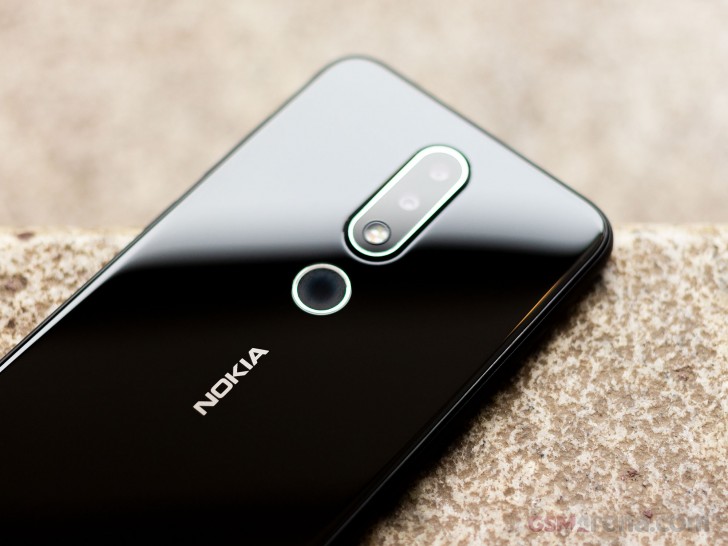
But what is undeniable is that the phone is still a good package overall. One of the highlights is the design, which is refreshingly compact (relatively speaking), making it a good option to those averse to big phones that seem to be taking over the market. Secondly, the camera is one of the best we have seen in this segment and takes some good-looking shots and even good-looking videos. And the Android One experience is there for those who seek it.
Overall, the Nokia 6.1 Plus is a very compelling device and one that deserves consideration. It won't singlehandedly put Nokia back on the map, but if they keep making such phones, then they'll get back up there soon.





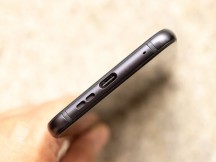






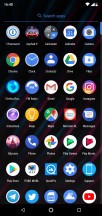
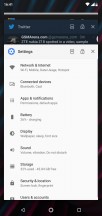

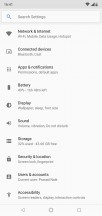
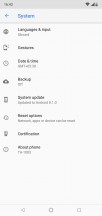

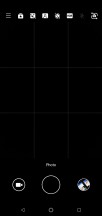
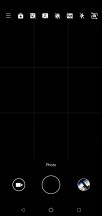
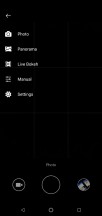
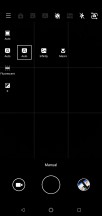
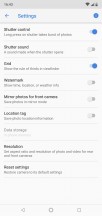























0 Response to "Nokia 6.1 Plus (X6) review"
Post a Comment